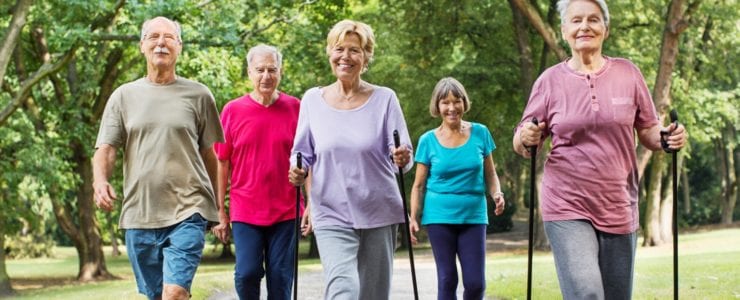Introduction: Walking is often hailed as one of the simplest yet most effective forms of exercise, and for seniors, it holds particular significance in promoting health and well-being. In this post, we’ll delve into the numerous benefits that regular walking can offer to seniors and how incorporating this activity into their daily routine can lead to a healthier and happier life.

Benefits of Walking for Seniors:
- Improved Cardiovascular Health: Regular walking is an excellent way for seniors to improve their cardiovascular health. It helps strengthen the heart, lower blood pressure, and improve circulation, reducing the risk of heart disease and stroke.
- Joint Health and Mobility: Contrary to common belief, walking can actually help improve joint health and mobility in seniors. Low-impact and weight-bearing, walking helps lubricate the joints, strengthen muscles, and improve flexibility, making it easier for seniors to perform daily activities and reduce the risk of falls.
- Mental Well-being: Walking is not only beneficial for the body but also for the mind. Seniors who engage in regular walking often experience reduced stress, anxiety, and depression levels. It promotes the release of endorphins, also known as “feel-good” hormones, which can elevate mood and improve overall mental well-being.
- Weight Management: Maintaining a healthy weight becomes increasingly important as we age, and walking can be a valuable tool for seniors looking to manage their weight. It helps burn calories, boost metabolism, and build lean muscle mass, contributing to weight loss and weight maintenance goals.
- Social Engagement: Walking can also serve as a social activity for seniors, providing opportunities to connect with friends, family, or fellow walkers. Whether it’s joining a walking group or simply strolling with a companion, the social aspect of walking can enhance motivation, accountability, and enjoyment.
Tips for Safe and Enjoyable Walking:
- Start slowly and gradually increase intensity and duration.
- Wear supportive and comfortable footwear to prevent injuries.
- Choose safe walking routes with smooth surfaces and adequate lighting.
- Stay hydrated by bringing water along during walks.
- Listen to your body and rest if you experience any discomfort or fatigue.